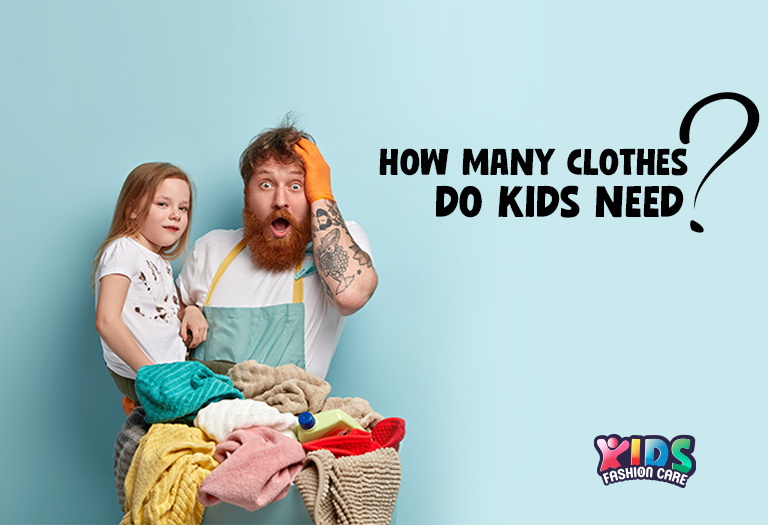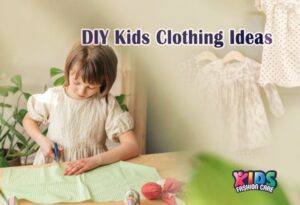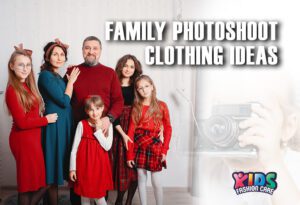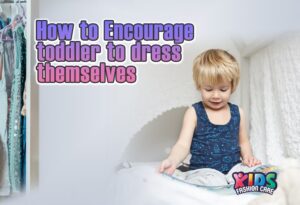Kids generally need 9-12 outfits per season. Toddlers, due to frequent spills, may need 12 outfits, while older kids can manage 9-10. It’s also good to have 2 to 3 pairs of pajamas and a few fancy outfits for different weather conditions. This way, they’ll be ready for anything without cramming their closets.
Table of Contents
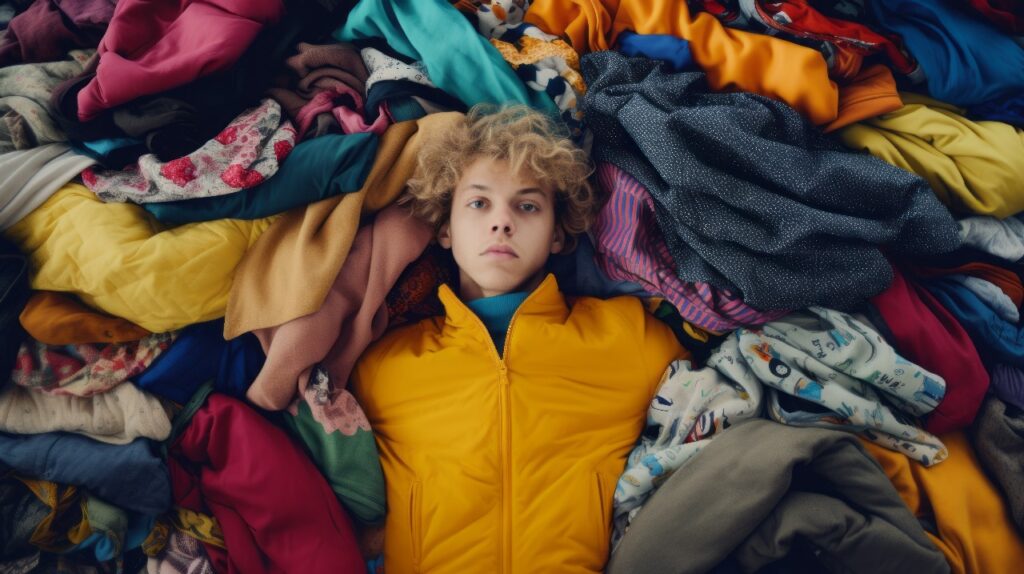
As a parent, I’ve learned how to determine the right number of outfits kids need.
I still remember when my child was starting school, I found myself with lots of clothes they hardly wore. That time, I realized it was best to simplify their wardrobe.
In this blog, I will give you useful tips on choosing the perfect amount of clothes for your kids. Using my own experiences, I will tell you how to shop wisely and avoid buying too much.
Whether you’re a new parent or want to organize your child’s closet, this guide will help you to make smart choices.
Outfits for Babies, Toddlers, and Child
As an expert in childcare, I’ve struggled to figure out how many clothes do kids need. So, I’ve set a helpful guide based on my research to make it easier for parents.
Babies (0-12 months)
Here’s what you need for your babies – I’m talking 6-9. For sleep, 4-6 comfortable sleepers make a big difference. And having 6-8 sets of tops and bottoms on hand will be a lifesaver.
- Onesies/Bodysuits: Babies are messy! They spit up, leak diapers, and make other messes. You’ll need to change their outfits several times a day. That’s why I suggest having 6-9 onesies or bodysuits on hand. Trust me, you’ll use them!
- Pajamas/Sleepers: Ensuring a comfortable sleep environment is essential for babies. Having 4-6 sleepers is sufficient to keep your baby cozy and prepared for bed each night.
- Tops and Bottoms: Having around 6-8 sets of tops and bottoms will ensure that your baby always has a clean outfit.
- Sock and Mitten: Keeping your baby warm is crucial in cold climates. I suggest having several pairs of socks and mittens available.
- Outerwear: Depending on where you live, you may need 2-3 jackets or sweaters to keep your baby warm when you venture outside.
- Special Occasion Outfits: It’s nice to have 2-3 special outfits for memorable occasions like weddings, holidays, or family get-togethers.
Toddlers (1-3 years)
When dressing toddlers, I find it’s best to have 7-9 sets of tops and bottoms due to their active nature. Girls should have 3-5 dresses for occasions, and 5-7 sets of pajamas for night.
- Tops and Bottoms: Toddlers are active and can get their clothes dirty quickly. From my experience, it is ideal to have 7-9 sets of tops and bottoms.
- Dresses or Outfits: Girls should have 3-5 dresses or outfits in their closet. This way, they’re always ready to hang out with friends.
- Pajamas: To ensure your toddler has a fresh set of pajamas every night, having 5-7 sets is recommended.
- Sock and Underwear: Socks and underwear are daily essentials. Keeping several pairs on hand will ensure your toddler is always prepared.
- Outerwear: Depending on the season, having 2 to 3 jackets or one coat is important to keep your youngster warm.
- Shoes: Toddlers need different shoes for different activities. I recommend having 2 to three pairs of shoes for various occasions, such as playtime and casual outings.
- Play Clothes: Toddlers need extra outfits for messy play and outdoor adventures. Stain-resistant clothes are a must-have for active young children.
Preschoolers (3-5 Years)
Preschoolers need 12-14 sets of tops and bottoms to ensure a fresh outfit each day. For special events, having 4 to 6 dresses is perfect.
Tops and Bottoms: Preschoolers typically need around 12-14 sets of tops and bottoms to ensure they have clean clothes for each day of the week.
Dresses or Outfits: For girls, having 4 to 6 special outfits is perfect for events like birthday parties or family gatherings.
Pajamas: It’s a good idea to have 6-8 sets of pajamas to keep preschoolers comfortable at night.
Socks and Underwear: 3-5 pairs of socks and underwear are essential, considering the daily changes and the importance of hygiene.
Outerwear: Depending on the season, 2-4 jackets or coats are necessary to keep preschoolers warm during outdoor activities.
Shoes: Preschoolers need 4-6 pairs of shoes for different activities. Like play, formal events, and everyday wear.
Play Clothes: 3 or 4 sets of play cloths are useful for extra messy playdates or outdoor adventures.
School-Aged Children (6-12 Years)
During a school event, I noticed my daughter benefited from having 4 to 6 special outfits for such occasions. Here are the details:
- Tops and Bottoms: School-aged children should have around 14 -16 sets of tops and bottoms to rotate throughout the school week.
- Outfits: 4-6 special outfits for girls ensure they have options for school events, parties, or family functions.
- Pajamas: 6 or 7 sets of pajamas are suitable for school-aged children for a good night’s sleep.
- Socks and Under-wear: 5-7 pairs of socks and underwear are necessary to cover daily needs and extracurricular activities.
- Outerwear: 3 or 4 jackets or coats appropriate for the season help keep school-aged children warm.
- Shoes: School-aged children typically need 6-8 pairs of shoes for various occasions. Includes school, sports, and formal events.
- Sportswear and School Uniform: 6-8 sets of sportswear or uniforms are often required for classes and team sports.
By following this guide, you’ll be well-prepared to meet your children’s clothing needs. This way, your kid will always look great, and you’ll save time on laundry, too.
Factors to Consider: How Many Clothes Kids Need

Age and Growth Rate
I understand how a child’s age and growth speed impact their clothing needs. When my son was a baby, he quickly outgrew outfits, needing new clothes every few months.
Babies grow rapidly, so it’s essential to have a flexible clothing plan. For older children, growth slows, and clothes last longer. But, you still need updates for wear and tear.
Climate and Season
Living in New York, I’ve seen how the weather affects what my kids wear. In winter, I make sure they have lots of cozy layers like sweaters, jackets, and thermal clothes.
But when summer rolls around, it’s all about light and cute outfits. It’s important to pick the right clothes for the weather so that your kids are comfy all year long.
Lifestyle and Activities
My daughter’s busy lifestyle has shown me that considering her daily activities is key to choosing the right clothing. As a soccer player, dancer, and artist, she needs a specialized dress for each pursuit.
Active kids get sweaty and dirty clothes, so they require more frequent closet changes. Understanding your child’s daily activities helps you plan a wardrobe that meets their unique needs.
Laundry Frequency
I found out that laundry affects how many clothes my kids should have. At my house, I do laundry twice a week. So each kid needs clothes for about three to four days.
If you do laundry less often, your kids might need more clothes. It’s essential to right balance convenience and suitability based on how frequently you can manage laundry routine.
Budget Considerations
I know how to handle household expenses wisely. I focus on buying important, long-lasting clothes instead of getting too many.
I also make sure to grab discounts to get great bargains, keeping my kids well-dressed without spending too much.
So, how too many clothes do kids need? It depends on their age and how fast they’re growing. It also matters where they live and what time of year it is.
Are they super active or chill? How often do you do laundry routine? And, of course, there’s the budget. Think about all these things, and you’ll get your kids a wardrobe that works for them.
Basic Wardrobe Essentials for Different Age Groups

Newborn Outfits and Infants (0-12 Months)
Onesies and Bodysuits
I soon figured out that onesies and bodysuits are a must-have for newborns. They’re super comfy, easy to slip on and off, and great for layering.
I faced a situation where I ran out of clean onesies faster than I expected due to frequent changes.
Sleepwear and Swaddles
During the first few months, sleepwear and swaddles were a lifesaver.
I remember struggling with my baby’s irregular sleep habits until I started using swaddles. They helped my baby sleep better, making my nights more restful.
Outerwear and Accessories
Living in a region with varying weather conditions, I found hats, mittens, and socks vital.
Once, I had to rush out and buy a warmer jacket when a sudden cold front swept in.
Toddlers (1-3 Years)
Play Clothes
Toddlers are always on the move, so durable plainclothes are a must.
I found out the hard way – my kid destroyed several outfits in one afternoon outside. Now I stick to super-tough fabrics, and it’s saved me a ton of stress!
Formal Wear
Special occasions demand a certain level of elegance. Having a few pieces of formal wear on hand can save the day.
I learned this when I had to run to find a suitable outfit for my toddler at a family wedding.
Seasonal Outerwear
Seasons changing means it’s time for the right clothes.
I saw this myself when I had to swap my kid’s clothes from summer to winter gear in a rush. Getting good outerwear keeps my child cozy and safe no matter the weather.
Preschoolers (3-5 Years)
Everyday Basics
Preschoolers need a variety of everyday basics like t-shirts, pants, and dresses.
I found it helpful to have multiple sets of these basics to avoid constant laundry cycles. Ensuring a mix of comfortable and easy-to-wash clothes is key.
Special Occasion Outfits
Having a couple of fancy outfits on hand has bailed me out a bunch of times. From birthdays to family get-togethers, having a favorite outfit makes getting ready easy.
I remember rushing to find something to wear the night before an event, and that’s when I learned to stay ready.
Footwear
Active kids need proper footwear to prevent discomfort and frustration.
I learned the hard way: tight shoes lead to cranky children. Now, I make sure to choose shoes that fit well and are suited to each activity.
School-Aged Children (6-12 Years)
School Uniform
Make sure your child has plenty of uniforms if their school clothes mandates them.
I once found myself in a rush when my child didn’t have a clean uniform for school. Having an ample supply of uniforms is key to avoiding stressful mornings.
Casual Wear
School-aged children need a mix of casual wear for weekends and after-school activities.
I saw what my kid liked to wear. So, I made sure they had plenty of casual outfits they really liked.
Sports and Activity Gear
With extracurricular activities, keeping the right sports and activity gear is important.
My child joined a soccer team, and I initially didn’t realize how much gear was needed. Being prepared with kids clothing and equipment can help your child perform best.
By preparing for each age group’s wardrobe needs, I’ve been able to ensure my children are always well-dressed, no matter the occasion.
Seasonal Wardrobe Planning
Spring and Summer
As the weather gets warmer, make sure to switch your kid’s clothes to lighter and cooler choices. Check out these must-haves for spring and summer dresses.
Lightweight Fabrics
As a seasonal expert, I know how crucial it is to choose light fabrics for spring and summer.
I’ve struggled to find breathable materials that keep my kids cool in the heat. By selecting cotton and linen, I make sure they stay comfortable and dry.
The American Academy of Pediatrics Study verifies that natural fibers are ideal for a kid’s delicate skin in warm weather.
Swimwear and Hats
I learned a big lesson on my beach vacation last summer: kids need the right swimwear and hats. Clothes that dry fast help prevent rashes and discomfort.
Those big hats keep their skin safe from the sun’s strong rays. The Skin Cancer Foundation says we have to protect kid’s skin. So these items are must-haves for summer.
Winter Clothes Essentials
When the seasons switch, kids’ wardrobes need a reboot, too. Getting ready for cold weather means adding layers and making sure they stay warm.
Layering Pieces
During a harsh morning walk with my kids, I realized the strength of layering. It was with long-sleeve t-shirts and sweaters to adjust to changing weather.
This technique keeps you cozy and lets you stay comfortable as the day gets warmer.
Warm Coats and Boots
I remember a winter trip when the temperatures dropped unexpectedly. That time, warm coats and waterproof boots helped me stay warm.
The National Weather Service advises using thermal wear to prevent hypothermia.
By following these key tips, you can expertly organize your children’s outfits to keep them ready for any weather.
Tips for Efficient Wardrobe Management

As a child fashion expert, I know the struggles of keeping kid’s clothes organized. Let me share some incredibly useful tips:
Organizing by Category
I once went to a workshop about minimalist living. They shared a great tip about sorting baby clothes by category.
Organizing similar items together makes it simpler to find what you’re looking for quickly. For example, you could put all your t-shirts in one spot and your pants in another.
This strategy not only saves time but also maintains a tidy closet.
Rotating Seasonal kids Clothes
During winter, I store away summer clothes and bring out the warmer matching outfits. This not only saves space but also ensures only the necessary items are within reach.
I’ve found vacuum-sealed bags particularly helpful for storing off-season clothes.
Utilizing Hand Me Downs
Getting clothes from friends and family that are still in good shape can save you cash. I always check through the clothes first, only keeping the ones that look good.
Smart Shopping Strategies
One important strategy is getting larger sizes during sales. This way, my kids can wear new clothes for a longer time as they grow quickly.
Also, I focus on buying clothes sturdy items that can handle rough play and lots of washing.
Follow these simple tips to take control of your kid’s closet. You’ll give them exactly what they need without the extra clutter.
How too many clothes should kids have? It depends, but with good planning, you can figure out what works best.
Addressing Special Clothing Needs
Kids with Sensory Sensitivities
I remember attending a seminar on sensory processing disorders. A mother shared her struggles in finding the right clothes for her child.
She explained how certain fabrics and tags caused discomfort and even meltdowns for her son.
I’ve learned that picking soft, comfy fabrics is a must for kids. Go for brands that skip the itchy tags or use natural fibers like cotton.
Adaptive Kids Clothing for Special Needs
I got into adaptive clothing items when I volunteered with a charity that helped kids.
There was a girl I worked with who had cerebral palsy. She struggled with regular clothes. She couldn’t move easily and needed quick access to medical stuff.
Clothes with magnetic buttons or side zippers are a huge help. They make it easy to get dressed and undressed, which means less stress and more freedom.
Sustainable Options
At an environmental conference, I heard a lot about reducing waste and choosing sustainable materials.
Take organic cotton, for example. It doesn’t have harsh chemicals or pesticides, so it’s perfect for kid’s sensitive skin.
When advising parents on how many outfits their kids need, I suggest focusing on quality over quantity.
Benefits of a Minimal Children’s Wardrobe
I once attended a parenting workshop. I heard from many parents who were struggling to keep their kids’ clothes in order.
This made me realize how helpful it is to have a simple wardrobe for kids.
Simplified Morning Routines
A small closet can make mornings way easier. With fewer clothes options, kids can pick out an outfit fast, which means less stress.
This not only makes mornings smoother but also helps children develop decision-making skills.
Cost Savings
Get a few great pieces that will save money in the long run. That means you won’t waste cash on things that’ll fall apart soon.
Enhanced Personal Style with Fewer Clothes
Kids build confidence when they have a capsule wardrobes. With fewer clothes options, they get creative and craft unique outfits that showcase their personality.
Frequently Asked Questions (FAQs)
How many onesies or bodysuits should I buy for my baby?
Clean and comfortable babies need frequent changes. So it’s crucial to have a stock of 6-9 onesies or bodysuits on hand.
What’s the ideal number of outfits for a youngster?
Toddler boys are very active and often get dirty clothes quickly. It is recommended that girls wear 7-9 sets of tops and bottoms, along with 3-5 dresses.
How many pairs of shoes does a preschooler need?
Preschoolers typically need 4-6 pairs of school shoes for different activities like play, formal events, and everyday wear.
What should be included in a winter wardrobe for kids?
Dress your kids in layers – long-sleeve shirt, sweaters, and warm coats. So they stay cozy in the cold.
How can I manage my child’s wardrobe efficiently?
Use three simple, effective strategies to keep your child’s wardrobe under control.
Categorize kids clothes
Swap in seasonal items
Shop smart by buying larger sizes during sales.
How many pairs of pajamas do kids need?
Kids typically need 4-6 pairs of pajamas. This ensures they have enough clothes for regular wear, considering laundry cycles.
How often should you buy kids clothes?
You should buy clothes every 3-6 months to accommodate their rapid growth and seasonal changes.
Conclusion
Make smart clothing choices for your kids with this guide. It helps you pick the right amount of clothes based on your kid’s age, growth rate, and laundry frequency.
In this blog post, I wanted to share helpful tips on managing a kid’s wardrobe and its benefits. It will save you time and hassles when it comes to dressing your little ones.
I believe my article has given you a great idea of how many clothing items kids need. Keep following my blogs for more useful tips on taking care of your child.

